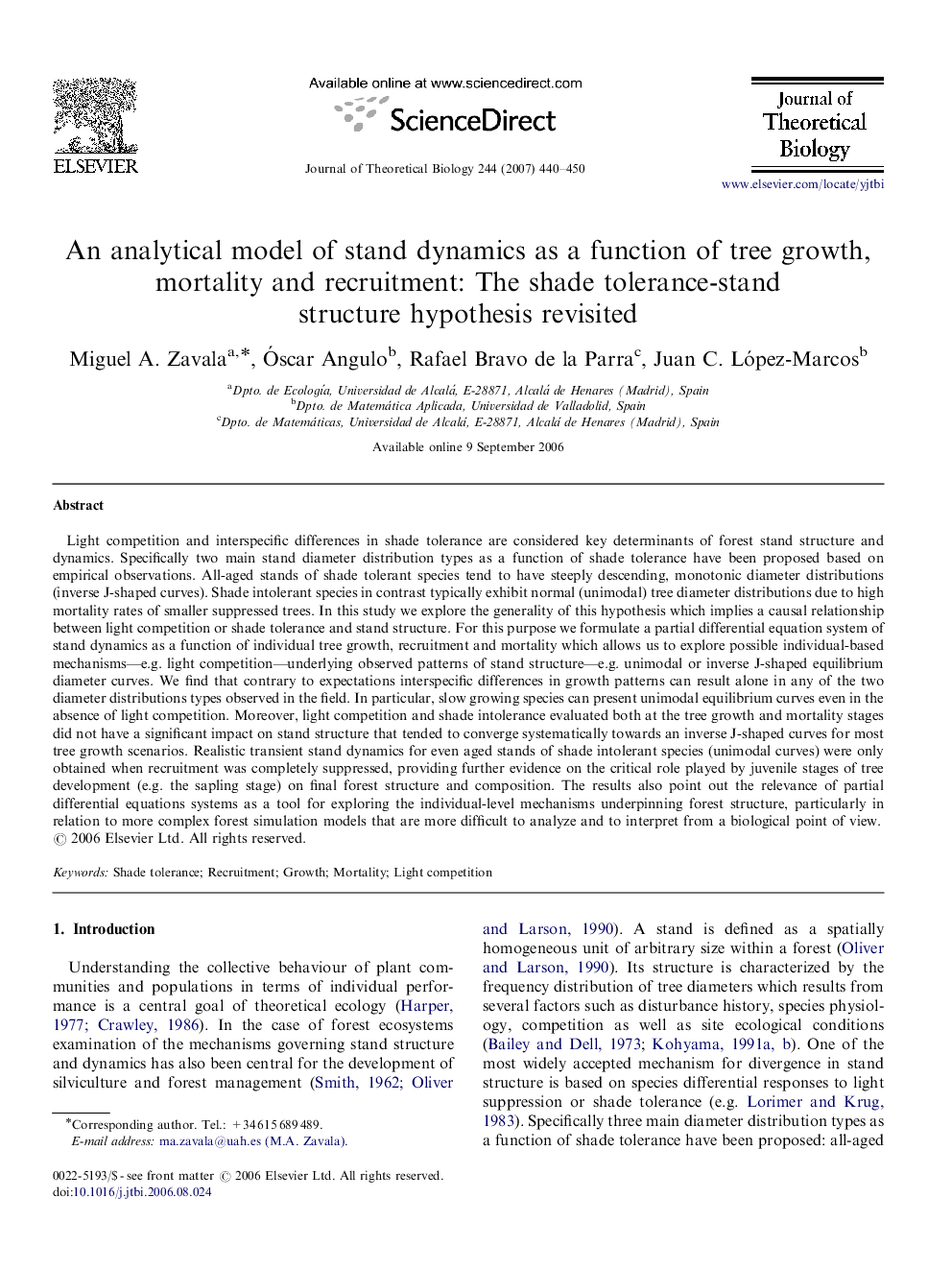| Article ID | Journal | Published Year | Pages | File Type |
|---|---|---|---|---|
| 4499252 | Journal of Theoretical Biology | 2007 | 11 Pages |
Light competition and interspecific differences in shade tolerance are considered key determinants of forest stand structure and dynamics. Specifically two main stand diameter distribution types as a function of shade tolerance have been proposed based on empirical observations. All-aged stands of shade tolerant species tend to have steeply descending, monotonic diameter distributions (inverse J-shaped curves). Shade intolerant species in contrast typically exhibit normal (unimodal) tree diameter distributions due to high mortality rates of smaller suppressed trees. In this study we explore the generality of this hypothesis which implies a causal relationship between light competition or shade tolerance and stand structure. For this purpose we formulate a partial differential equation system of stand dynamics as a function of individual tree growth, recruitment and mortality which allows us to explore possible individual-based mechanisms—e.g. light competition—underlying observed patterns of stand structure—e.g. unimodal or inverse J-shaped equilibrium diameter curves. We find that contrary to expectations interspecific differences in growth patterns can result alone in any of the two diameter distributions types observed in the field. In particular, slow growing species can present unimodal equilibrium curves even in the absence of light competition. Moreover, light competition and shade intolerance evaluated both at the tree growth and mortality stages did not have a significant impact on stand structure that tended to converge systematically towards an inverse J-shaped curves for most tree growth scenarios. Realistic transient stand dynamics for even aged stands of shade intolerant species (unimodal curves) were only obtained when recruitment was completely suppressed, providing further evidence on the critical role played by juvenile stages of tree development (e.g. the sapling stage) on final forest structure and composition. The results also point out the relevance of partial differential equations systems as a tool for exploring the individual-level mechanisms underpinning forest structure, particularly in relation to more complex forest simulation models that are more difficult to analyze and to interpret from a biological point of view.
